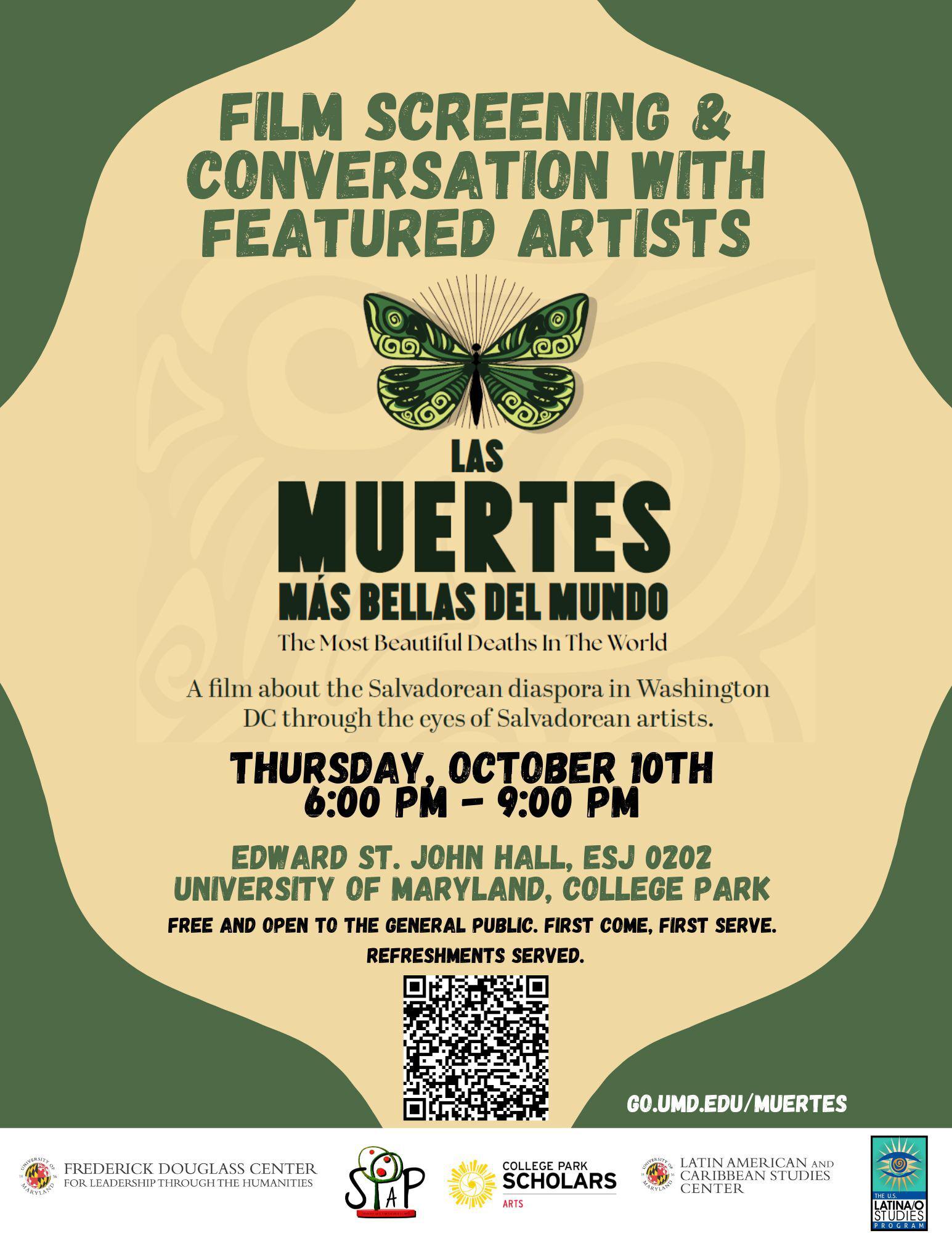- September 17, 2024
- By Karen Shih ’09
Dancing down the streets of the nation’s capital with a fresco de ensalada de frutas—a mixed tropical fruit drink—in hand during the annual Fiesta DC. Cheering alongside thousands of fans for El Salvador’s biggest soccer star, Raúl Díaz Arce, in RFK Stadium. Digging into pan con pollo—a traditional chicken sandwich—every Christmas and Thanksgiving.
For José Centeno-Meléndez ’12, Salvadoran culture was like a warm hug as he grew up, surrounding him everywhere in the suburbs of Washington, D.C. But when he moved to Texas for graduate school, he realized that that wasn’t the case everywhere.
Despite Salvadorans being the third-largest Latinx population in the United States, he said, “There just aren’t that many cultural texts, movies, books or anything produced by Salvadorans, where our people tell their own stories in their own words. We’re underrepresented in mainstream, even Latinx literary spaces.”
This Hispanic Heritage Month, a new documentary, “Las Muertes Mas Bellas del Mundo,” aims to change that. He and two fellow Salvadoran Terps helped create the film, which means “The Most Beautiful Deaths in the World,” premiering Wednesday at the GALA Hispanic Theater in Washington, D.C.
It follows longtime D.C. poet and community activist Quique Avilés, who led the production of the film, and other local Salvadoran artists, including a photographer, a dancer and musicians. They explore the often unspoken, intergenerational traumas that have shaped the community of more than 200,000 throughout the D.C. metro area.
“People don’t want to languish in the past, because the past wasn’t a good place to be. But one of the important functions of this film is to not be afraid to talk about it, and to unearth it,” said Hugo Nájera ’00, M.A. ’07, who helped create the film.
That past was a brutal civil war that ravaged El Salvador from 1980 to 1992, driving more than 20% of its population abroad to escape the indiscriminate and rampant violence that eventually killed more than 75,000 civilians. The wave of Salvadorans who had come to D.C. in the 1960s for economic opportunities created a pipeline for many members of the newer generation escaping violence. These immigrants became part of the fabric of the metro area, building roads and homes, working service jobs in embassies and restaurants, and contributing to local culture.
To find the best sources to interview and to ensure the film’s historical accuracy, Avilés turned to a team of scholars including Centeno-Meléndez, an oral historian at the National Museum of American History, and UMD Associate Professor Ana Patricia Rodríguez, who teaches U.S. Latina/o and Central American literatures. Nájera composed and produced the documentary’s soundtrack, and appears on camera as well.
“When people think of documentaries, they think of something very archival,” said Nájera. “We have archival footage, but there’s a level of ‘right now’ in the movie. There’s a lot of humanity that will make you smile and laugh and have your mind blown by what people say.”
The Terps and the poet have crossed paths before. Nájera, who moonlights as a DJ focused on sounds from the Global South, has performed alongside Avilés at the Smithsonian Folklife Festival and helped edit several of his previous works. Rodríguez and her students have contributed to several of Avilés’ projects, including collecting oral histories for “Los Treinta,” commemorating 30 years of Salvadoran migration from the start of the conflict, and “The Memories of Speedy Gonzales,” for which students contributed texts.
“His work is very collaborative and community-based and all about art as activism,” said Rodríguez.
All the Terp collaborators have personal connections to the subject matter. Rodríguez was born in El Salvador and grew up in the San Francisco Bay Area, and she remembers the influx of cousins, including ones involved in the leftist guerilla movement: “My home became an Underground Railroad” of sorts in the 1980s. Centeno-Meléndez and Nájera both grew up in the D.C. area, and are now excited for their family and friends to see themselves, their accents and their stories reflected in the documentary.
The UMD screening and panel discussion on Oct. 10 will be a full circle moment of sorts for the three Terps; Rodríguez taught both Centeno-Meléndez and Nájera, and now she has a new tool to educate and inspire students for years to come.
“Despite the hardships and obstacles, Hugo and José have become cultural movers and producers and activists. For me as a teacher, it’s a proud moment,” she said. “We’re just elated that this film is being shown and shared. We talk a lot about being seen in society. But it’s even more important for us to see ourselves.”
“Las Muertes Más Bellas del Mundo” screening and Q&A
6-9 p.m. Oct. 10
ESJ 0202
Contact Associate Professor Ana Patricia Rodríguez with questions and follow @umdsllc across social platforms for updates.

